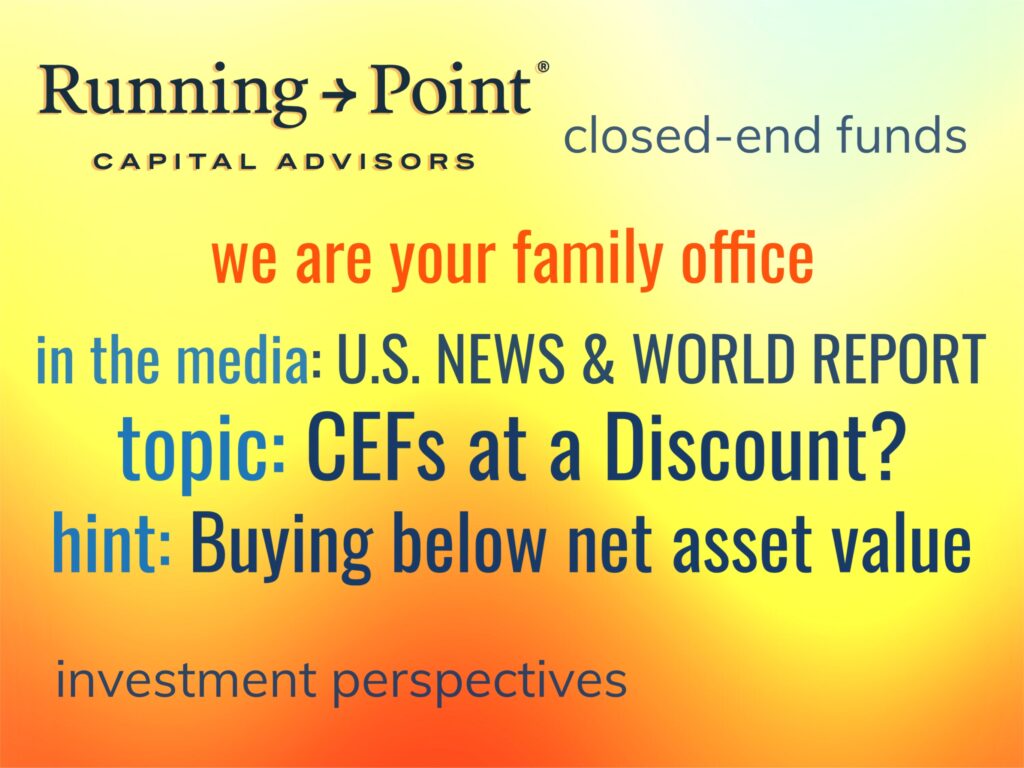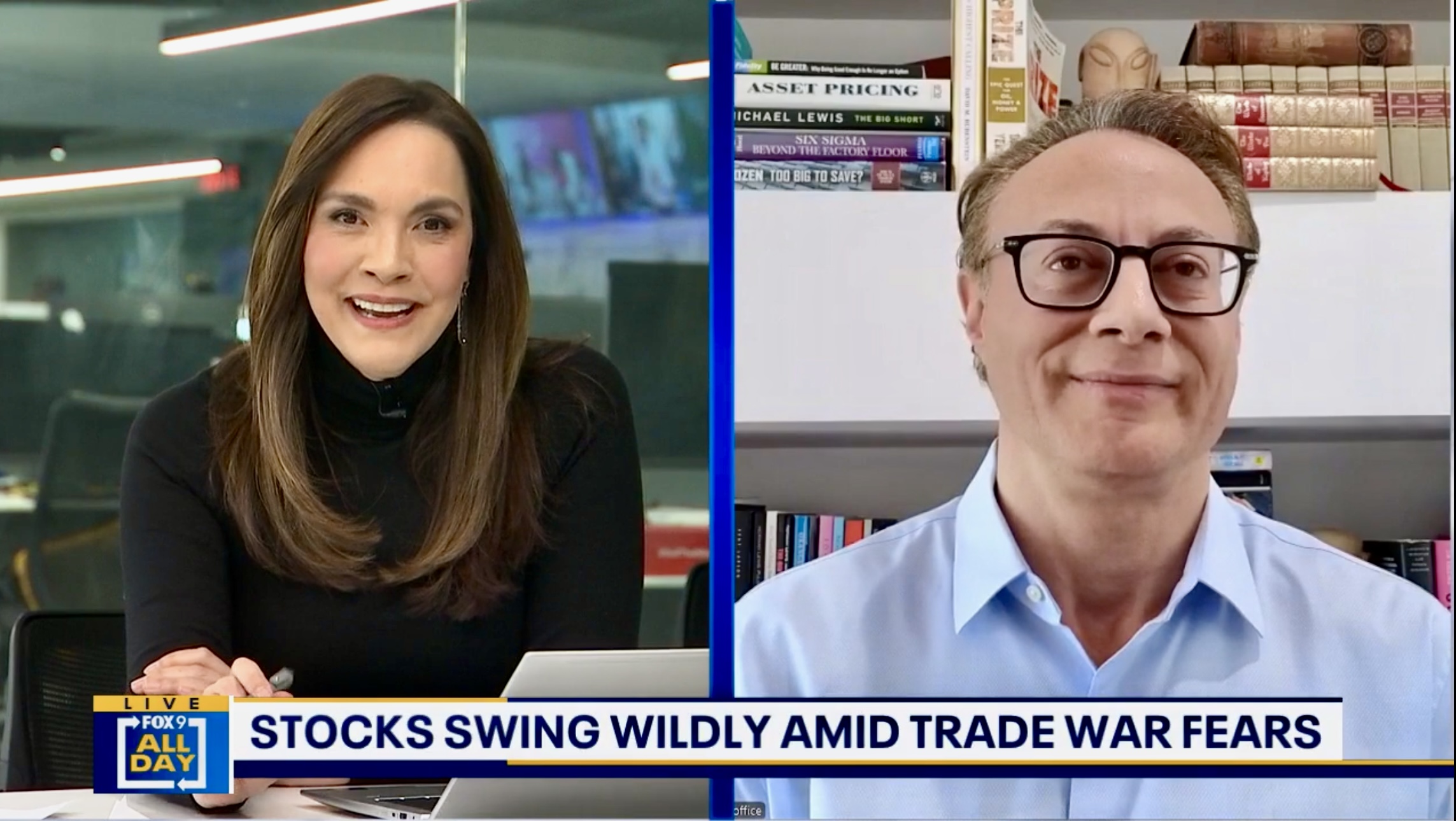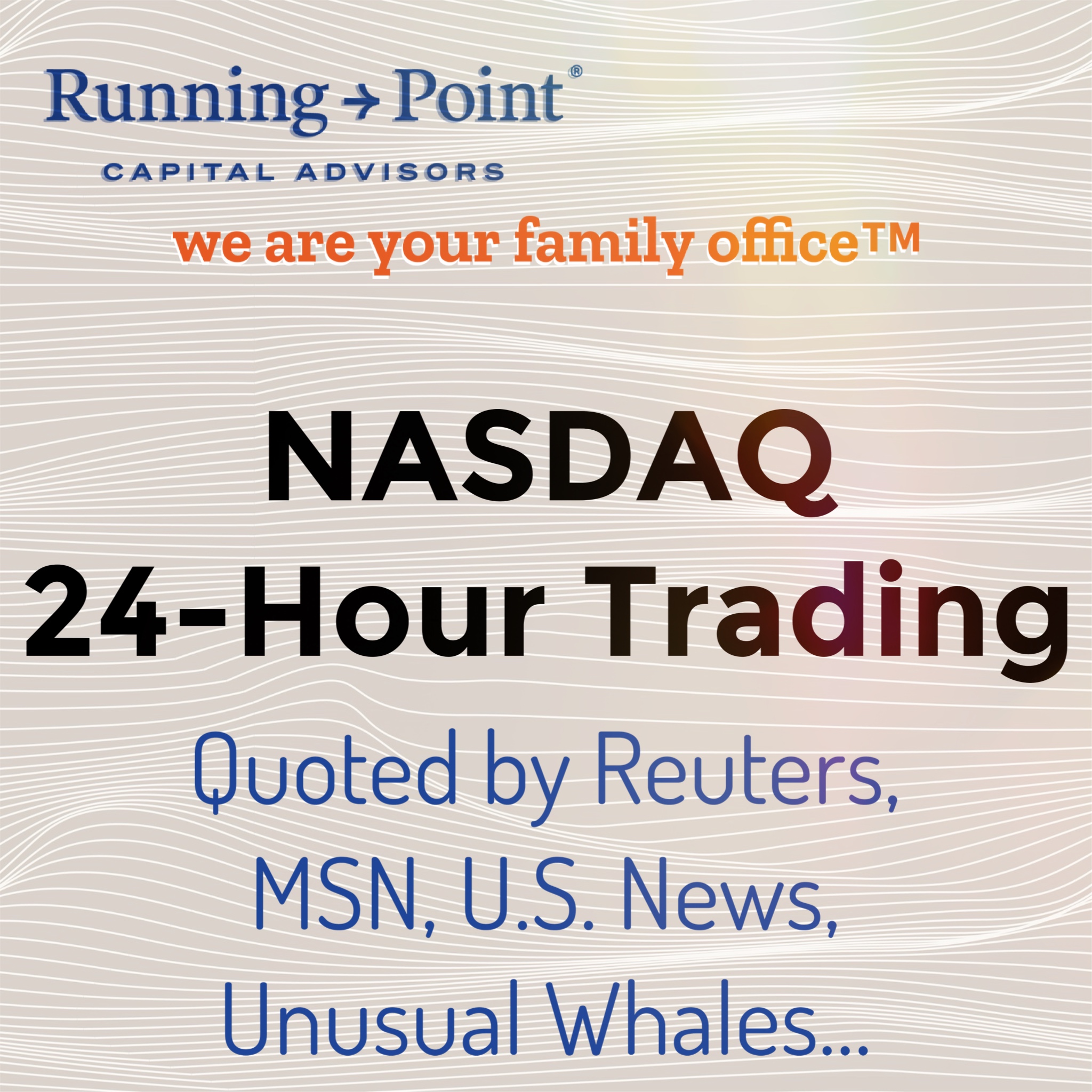What to know about closed-end funds (CEFs)
Running Point and its chief investment officer, Michael Ashley Schulman, CFA were quoted by U.S. News & World Report in an article — by reporter Tony Dong, “5 Funds Trading at the Biggest Discounts to NAV” — regarding closed-end funds (CEFs) trading at a discount to their net asset value.
Note: A closed-end fund (CEF) is a type of investment fund with a fixed number of shares that are traded on stock exchanges. Unlike open-end funds (e.g., mutual funds and ETFs), CEFs do not continuously issue or redeem shares. The fund’s market price can be either at a premium or a discount to its net asset value (NAV), representing the total value of its assets minus liabilities. CEFs can invest in various assets and provide investors with a way to access a diversified portfolio with professional management.
This article touches on CEFs, how net asset value discounts work, trading, and the fourth-quarter/January effect.
How NAV works
Investing in a closed-end fund at a discount occurs when the market price of the fund’s shares is lower than its NAV per share.
A closed-end fund (CEF) is an investment fund structure with a fixed number of shares that trade on an exchange, much like a stock, with prices fluctuating up and down daily. The net asset value (NAV) of a closed-end fund is a key valuation metric that represents the total value of the fund’s assets minus its liabilities; this is important because CEFs often use leverage (i.e., they borrow money) to buy more assets; in a flattish to positive market, leverage can amplify gains, but in a negative scenario, leverage can accelerate losses
The NAV is calculated by dividing the total value of the fund by the number of outstanding shares. Unlike open-end funds (like ETFs and mutual funds), closed-end funds do not continuously issue and redeem shares based on investor demand; instead, the number of shares remains relatively constant (until an announced corporate action such as a tender, rights offering, or redemption alters share count and valuation).
Trading
When buying and selling CEFs it often helps to carefully determine your desired price and use limit orders to protect yourself from overpaying or underselling. Closed-end funds often trade at a relatively wide bid/ask spread because they are less liquid than their open-end counterparts and many big-name stocks. An at the market order to buy or sell a large number of shares can often move the price to your detriment over the short-term.
Discounts and Yields
Purchasing shares at a discount can appealingly allow you to acquire assets for less than their intrinsic value, potentially leading to capital appreciation if the discount narrows over time. The discount, along with a CEF’s leverage can also make the yield seem extra tempting. Make sure the yield can be maintained without eating into capital and try to determine if there will be enough share demand in the short to medium-term to narrow the discount.
Fourth-quarter/January effect
Buyers of CEFs—with disappointing year-to-date performance—late in the fourth-quarter (Q4) can sometimes capture gains in January. Historically, investors purchasing CEFs late in the fourth quarter stand to benefit from tax-loss selling dynamics. CEF discounts to net asset value (NAV) typically narrow the most in January as prices outperform NAVs. On average, CEF market prices beat NAV performance by nearly 1.5% in January according to BlackRock because of the so-called January Effect where pent-up demand emerges after investors sell positions to harvest tax losses. As they redeploy capital in January, CEF prices often recover faster than underlying assets.
In essence, tax-loss selling late in the year creates temporary CEF mispricing that buyers can capture. The Q4 selling sets up bargains for those buying funds with temporarily exaggerated discounts compared to actual asset values. For deal-seeking investors, deploying capital into unfairly discounted CEFs near year-end historically has an above average chance of producing slight gains during January. The strategy lets buyers try to advantage from the annual turn-of-the-year tax-driven distortion in closed-end fund pricing.
Considerations
Investors should carefully assess the reasons behind a CEF’s discount, considering whether it is due to temporary market conditions, poor fund management, excessively high expense ratios, under-funded interest income, or weak fundamentals of the underlying assets.
Understanding the fund’s investment strategy, fees, and the historical pattern of discounts and premiums is also helpful. Try to judge a CEF not in isolation but compare it to other similar CEFs targeting the same sector; does it have a larger or smaller discount and is the yield higher or lower relative to other similar funds? Discounts can widen, potentially leading to capital losses; even if NAVs remain stable, this can happen if dividends are reduced. Monitoring the fund’s leverage and its impact on risk is paramount. Investors may want to make sure a CEF’s strategy works well within their whole portfolio and not just buy it because it looks cheap.
Quoted article excerpts are below:
“For deal-seeking investors, deploying capital into unfairly discounted CEFs near year-end historically has an above-average chance of producing slight gains during January,” says Michael Ashley Schulman, partner and chief investment officer at Running Point Capital. “The strategy lets buyers take advantage of the annual turn-of-the-year, tax-loss-harvesting-driven distortions in CEF pricing.”
“Purchasing CEF shares at a discount can allow you to acquire assets for less than their intrinsic value, potentially leading to capital appreciation if the discount narrows over time,” Schulman says.
Buying a CEF at a discount to NAV can therefore be advantageous, as it offers the potential for higher returns if the market price realigns with the NAV. However, it is not a risk-free trade, as there is no guarantee the CEF’s market price will rebound to align with its NAV.
“Investing at a discount can be attractive as you are technically purchasing assets at a discounted value,” Kalapos says. “However, you need to be very comfortable with the underlying assets in the fund and understand the historical discount and premium trend line.”
Schulman agrees with Kalapos, noting: “Investors should carefully assess the reasons behind a CEF’s discount, considering whether it is due to temporary market conditions, poor management, excessively high expense ratios, under-funded interest income or weak fundamentals of the underlying assets.”

Discount the obvious, bet on the unexpected.
George Soros
Disclosure: The opinions expressed are those of Running Point Capital Advisors, LLC (Running Point) and are subject to change without notice. The opinions referenced are as of the date of publication, may be modified due to changes in the market or economic conditions, and may not necessarily come to pass. Past performance is not indicative of future results. Forward-looking statements cannot be guaranteed. Running Point is an investment adviser registered with the U.S. Securities and Exchange Commission. Registration does not imply a certain level of skill or training. More information about Running Point’s investment advisory services and fees can be found in its Form ADV Part 2, which is available upon request. RP-23-138


